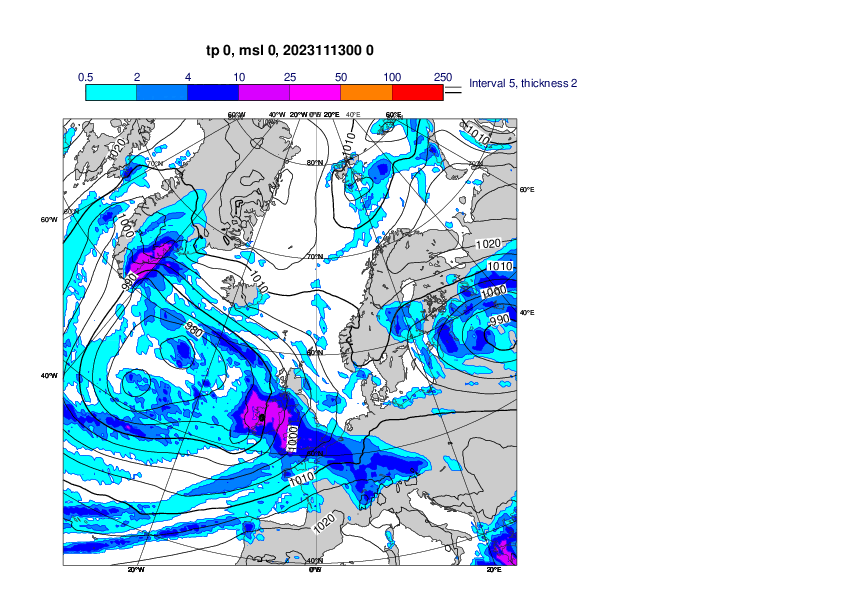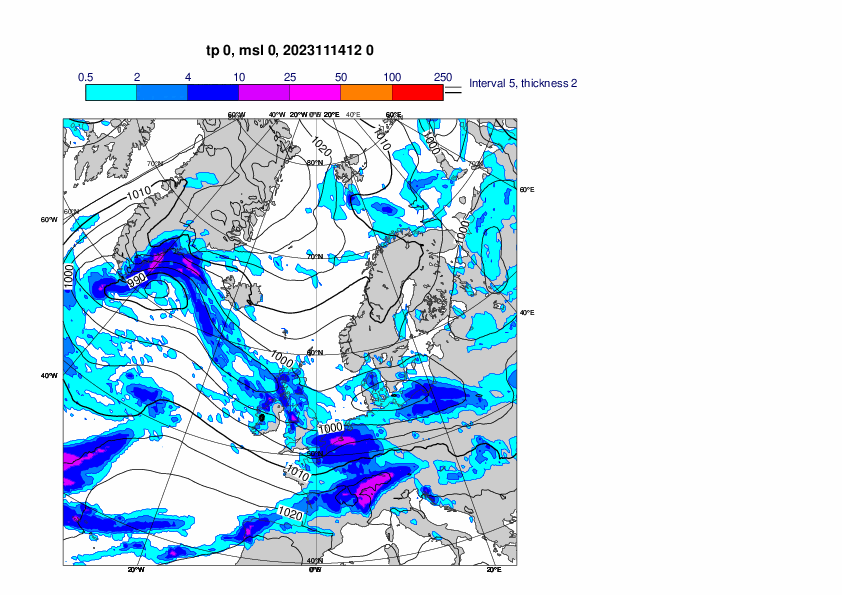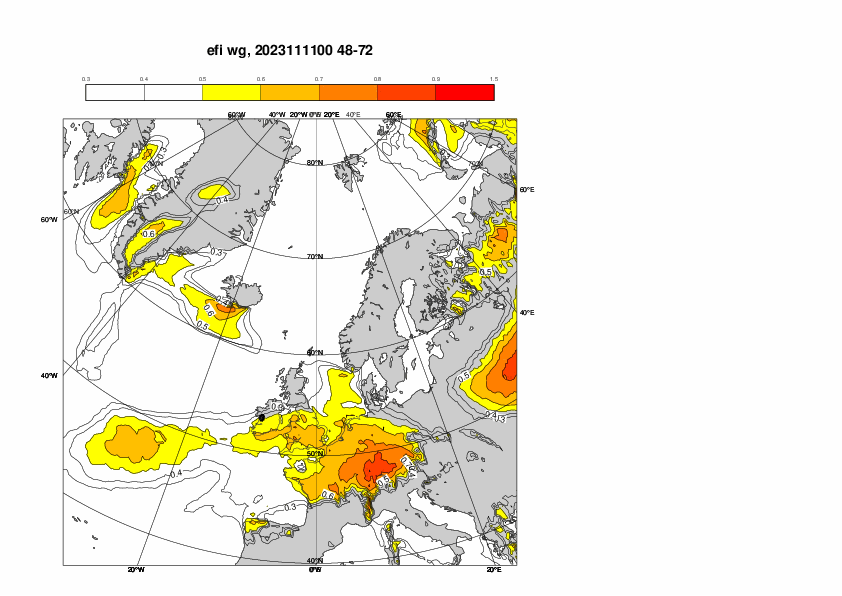Status:Ongoing analysis Material from: Linus, Mohamed
1. Impact
The storm named Debi affected Ireland and northern half of the British Isles on 13 November. The storm brought strong wind gusts and heavy rainfall. Warnings for strong wind were in-force in Ireland and parts of the UK. Pictures on social media are showing some of the damage caused by the heavy wind gusts. The storm Debi is relatively small feature formed as part of a large trough in the North Atlantic.
2. Description of the event
The plots below show analyses of MSLP and 6 hour rainfall from11 November 00UTC to 15 November 00UTC, every 12th hour.
3. Predictability
3.1 Data assimilation
3.2 HRES
The plots below show 24-hour maximum wind gusts (13 November 00UTC - 14 November 00UTC) in observations (first plot) concatenated short forecasts (second plot) and ENS control forecasts with different lead times. Unfortunately we do not have many observations of wind gusts from Ireland.
3.3 ENS
The plots below shows EFI for 1-day maximum wind gusts (13 November) from different initial dates. It is only two days before the event (11 November) that the ensemble picked up the signal of the event on Ireland.
The plot below shows the forecast evolution plot for 24-hour maximum wind gust (13 November) inside a 0.5x0.5 box around Galway, Ireland. Observation - green hourglass, concatenated 6-hour forecasts - green dot, ENS control –red, ENS blue box-and-whisker, Model climate – cyan box-and-whisker. Ensemble mean as black diamonds. Triangle marks the maximum in the model climate based on 1600 forecasts. One can note in the figures in Section 3.2, there is one or two grid points in the analysis and shortest control forecast that exceed 40 m/s in the south-western corner of the evaluated box.
3.4 Monthly forecasts
3.5 Comparison with other centres
4. Experience from general performance/other cases
5. Good and bad aspects of the forecasts for the event
- The interesting aspect of this case is the relatively low predictability compared to Ciaran. This is probably due to the small-scale of the cyclone.























